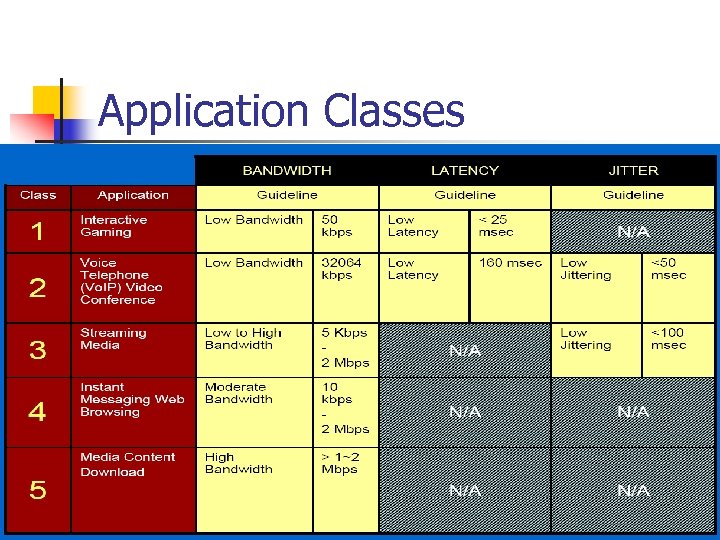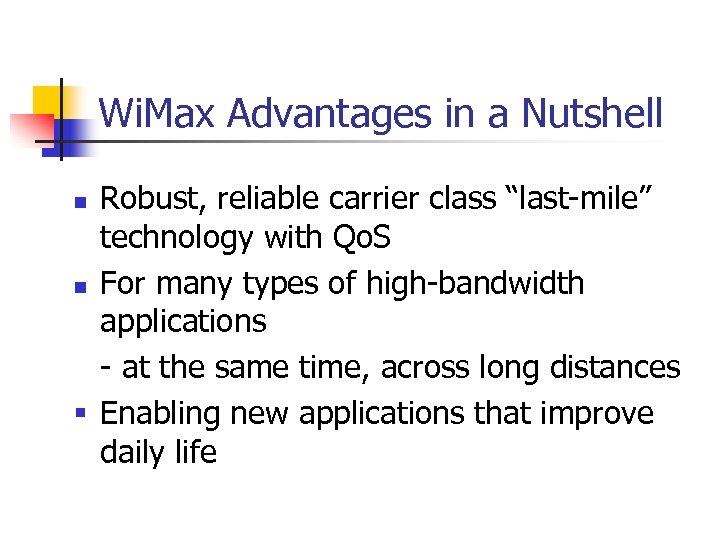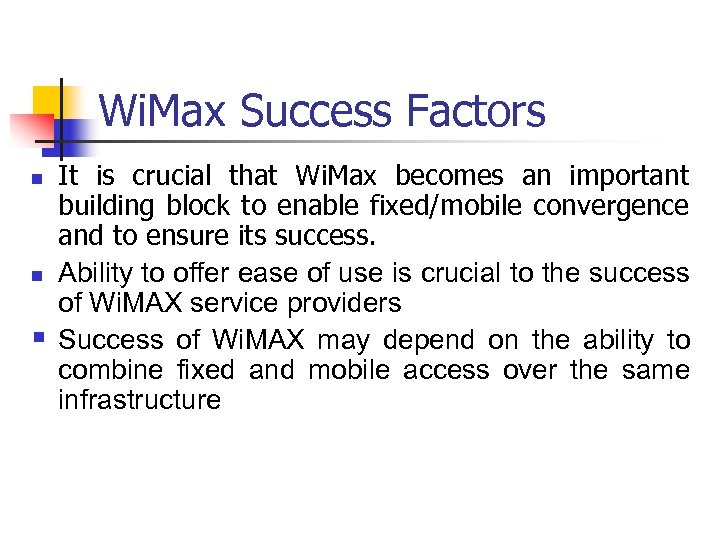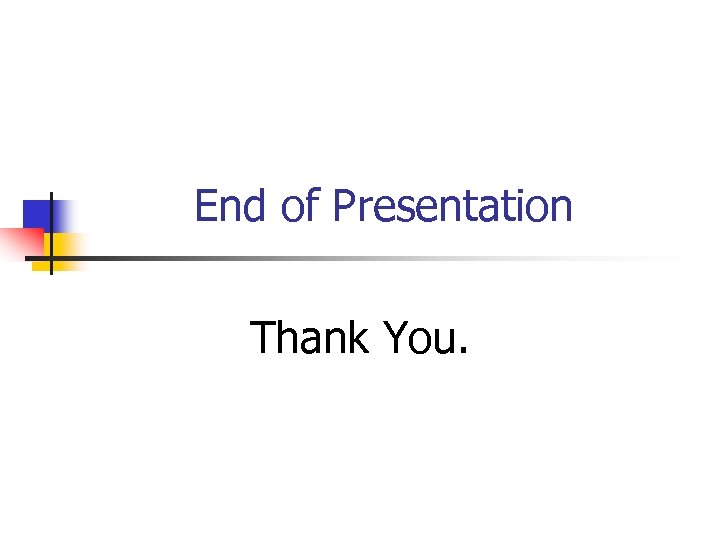b207333ab9255a7d35b775a46b6a2f9f.ppt
- Количество слайдов: 42

Introduction to Wi. Max and Broadband Access Technologies Presented at APRICOT 2006 On 27 February 2006 At Perth, Australia By M. Farhad Hussain

What is Wi. Max? n n Wi. Max (Worldwide Interoperability for Microwave Access) is a standards-based technology enabling the delivery of last mile wireless broadband access as an alternative to cable and DSL. The technology is specified by the Institute of Electrical and Electronics Engineers Inc. , as the IEEE 802. 16 standard.

Wi. Max Forum n n n It is a non-profit industry body dedicated to promoting the adoption of this technology and ensuring that different vendors’ products will interoperate. It is doing this through developing conformance and interoperability test plans and certification program. Wi. MAX Forum Certified™ means a service provider can buy equipment from more than one company and be confident that everything works together.

Wi. Max Technology n n n Wi. MAX is expected to provide fixed , nomadic, portable and, eventually, mobile wireless broadband connectivity without the need for direct line-of-sight (LOS) with a base station. In a typical cell radius deployment of three to ten kilometers, Wi. MAX Forum Certified™ systems can be expected to deliver capacity of up to 40 Mbps per channel, for fixed and portable access applications. Mobile network deployments are expected to provide up to 15 Mbps of capacity within a typical cell radius deployment of up to three kilometers.

Why is it Interesting? n n n Simultaneously support hundreds of businesses with T-1 speed connectivity and thousands of homes with DSL speed connectivity. Promise of potential low cost and flexibility in building broadband networks. Scalability, as extra channels and base stations can be added incrementally as bandwidth demand grows. Support for both voice and video as well as Internet data. Semiconductor vendors envisage Wi. Max-enabled chips appearing in PCs in 2006 and in notebook computers and PDAs by 2007

Wi-Fi: The Predecessor of Wi. Max n n Wi-Fi (Wireless Fidelity) is a set of technologies that are based on the IEEE 802. 11 a, b, and g standards. Wi-Fi is considered to be one of the first widely deployed fixed broadband wireless networks. The Wi-Fi architecture consists of a base station that wireless hosts connect to in order to access network resources. As long as the users remain within 300 feet of the fixed wireless access point, they can maintain broadband wireless connectivity.

Wi-Fi Standards Standard 802. 11 a Throughput Up to 54 Mbps 802. 11 b Up to 11 Mbps Range Frequency Up to 300 ft Between 5 and 6 Ghz Up to 300 ft 2. 4 Ghz 802. 11 g Up to 54 Mbps Up to 300 ft 2. 4 Ghz

Strengths of Wi-Fi n n Simplicity and ease of deployment given that it uses unlicensed radio spectrum which does not require regulatory approval. Cost of rolling out this wireless solution is low. Users are able to be mobile for up to 300 feet from the access point. There are many Wi-Fi compatible products that are available at a low cost and can interoperate with other network technologies. Wi-Fi clients can work seamlessly in other countries with minimal configuration.

Weaknesses of Wi-Fi n n Limited level of mobility. Susceptible to interference. Designed technically for short-range operations and basically an indoors technology. Security is a concern.

Relation of Wi-Fi and Wi. Max n n Wi. Max eliminates the constraints of Wi-Fi. Unlike Wi-Fi, Wi. Max is intended to work outdoors over long distances. Wi. Max is a more complex technology and has to handle issues of importance such as Qo. S guarantees, carrier-class reliability, NLOS. Wi. Max is not intended to replace Wi-Fi. Instead, the two technologies complement each other.

Wi. Max Standards 802. 16 a 802. 162004 802. 16 e 2005 Date December Completed 2001 January 2003 June 2004 December 2005 Spectrum 10 -66 GHz < 11 GHz < 6 GHz Operation LOS Non-LOS and Bit Rate 32 -134 Mbps Up to 75 Mbps Up to 15 Mbps 3 -5 miles 1 -3 miles Cell Radius 1 -3 miles Mobile

Wi. Max is well suited to offer both fixed and mobile access

How Wi. Max Works n § Wi. Max can provide 2 forms of wireless service: - Non-LOS, Wi-Fi sort of service, where a small antenna on a computer connects to the tower. Uses lower frequency range (2 to 11 GHz). - LOS, where a fixed antenna points straight at the Wi. Max tower from a rooftop or pole. The LOS connection is stronger and more stable, so it is able to send a lot of data with fewer errors. Uses higher frequencies, with ranges reaching a possible 66 GHz. Through stronger LOS antennas, Wi. Max transmitting stations would send data to Wi. Max enabled computers or routers set up within 30 (3, 600 square miles of coverage) mile radius.

Wi. Max Rollout n Wi. Max Forum anticipates rollout of its technology in 3 phases: - Phase 1: Fixed Location, Private Line Services, Hot Spot Backhaul. - Phase 2: Broadband Wireless Access/Wireless DSL - Phase 3: Mobile/Nomadic Users.

Wi. Max Spectrum n n n Broad Operating Range Wi. Max Forum is focusing on 3 spectrum bands for global deployment: Unlicensed 5 GHz: Includes bands between 5. 25 and 5. 85 GHz. In the upper 5 GHz band (5. 725 – 5. 850 GHz) many countries allow higher power output (4 Watts) that makes it attractive for Wi. Max applications. Licensed 3. 5 GHz: Bands between 3. 4 and 3. 6 GHz have been allocated for BWA in majority of countries. Licensed 2. 5 GHz: The bands between 2. 5 and 2. 6 GHz have been allocated in the US, Mexico, Brazil and in some SEA countries. In US this spectrum is licensed for MDS and ITFS.

Benefits of Licensed and License-Exempt Solutions Licensed Solution License-Exempt Solution Better Qo. S Fast Rollout Better NLOS reception Lower Costs at lower frequencies Higher barriers for More worldwide options entrance

Technical Similarities and Differences Between Licensed and License-Exempt Bands n n n Both solutions are based on IEEE 802. 16 -2004 standard, which uses OFDM in the physical (PHY) layer. OFDM provides benefits such as increased SNR of subscriber stations and improved resiliency to multi-path interference. For creating bi-directional channels for uplink and downlink, licensed solutions use FDD while license exempt solutions use TDD.

Time Division Duplexing (TDD) Description Advantages A duplexing technique used in license-exempt solutions, which uses a single channel for uplink and downlink. Enhanced flexibility, easier to pair with smart antenna technologies, asymmetrical. Disadvantages Cannot transmit and receive at the same time. Usage “Bursty”, asymmetrical data applications, environments with varying traffic patterns, where RF efficiency is more important than cost.

Frequency Division Duplexing (FDD) Description A duplexing technique used in licensed solutions that uses a pair of spectrum channels, one for the uplink and another for the downlink. Advantages Proven technology for voice, designed for symmetrical traffic, does not require guard time. Disadvantages Cannot be deployed where spectrum is unpaired, spectrum is usually licensed, higher cost associated with spectrum purchase. Usage Environments with predictable traffic patterns, where equipment costs are more important than RF efficiency.

Challenges to Overcome in Wi. Max Deployment n n RF Interference: Disrupts a transmission and decreases performance. Common forms are multi-path interference and attenuation. Overlapping interference generate random noise. Infrastructure Placement: The physical structure that houses or supports the base station must be RF friendly. A metal farm silo, for example, may distort signals, or a tree swaying in the wind may change signal strength. Obstacles such as trees and buildings frequently block signal paths. High RF activity in the area can cause interference.

Solving the challenges in Wi. Max Deployment n Proper network design and infrastructure placement are critical for solving the challenges. - Subscriber Site Survey, Statistics Gathering, coordination of RF use with neighbouring providers. - Antennas (Type, Tilt Angles, Array Gain, Diversity Gain) - Proper design and deployment of the provider’s NOC. - Well deployed base station or cells with 24/7 access, RF friendly structure, and shielding from weather elements.

Orthogonal Frequency Division Multiplexing (OFDM) n n n All profiles currently defined by the Wi. Max Forum specify the 256 -carrier OFDM air interface. Allows digital signal to be transmitted simultaneously on multiple RF carrier waves. Adaptable to NLOS schemes. Resistant to multi-path effects. Spectrally efficient technique to transmit wireless digital data. Able to deliver higher bandwidth efficiency. There are some obstacles in using OFDM in transmission system in contrast to its advantages. A major obstacle is that the OFDM signal exhibits a very high Peak to Average Power Ratio (PAPR).

Scope of 802 standards

PHY Layer Features of IEEE 802. 16 -2004 Feature Benefit 256 point FFT OFDM Built in support for addressing multiwaveform path in outdoor LOS and NLOS environments. Adaptive Modulation and variable error correction encoding per RF burst TDD and FDD support Ensures a robust RF link while maximizing the number of bits/second for each subscriber unit. Addresses varying worldwide regulations when one or both may be allowed

PHY Layer Features of IEEE 802. 16 -2004(Continued) Feature Benefit Flexible Channel Sizes (Can be an integer multiple of 1. 25 MHz, 1. 5 MHz, and 1. 75 MHz with a maximum of 20 MHz. Provides the flexibility to operate in many different frequency bands with varying channel requirements around the world. Designed to support smart Smart antennas can suppress antenna systems. interference and increase system gain. They are becoming important to BWA deployment as their costs come down.

MAC Layer Features of IEEE 802. 16 -2004 Feature Benefit TDM/TDMA Scheduled Efficient bandwidth usage Uplink/Downlink frames. Scalable from 1 to hundreds of subscribers Connection-oriented Allows cost effective deployments by supporting enough subscribers to deliver a robust business case • Per Connection Qo. S • Faster packet routing and forwarding

MAC Layer Features of IEEE 802. 16 -2004 (Continued) Feature Qo. S Benefit • Low latency for delay sensitive services • Optimal transport for video, Data prioritization ARQ • Improves end-to-end performance by hiding RF layer induced errors from upper layer protocols Adaptive • Enables highest data rates allowed by channel Modulation conditions, improving system capacity Security and • Protects user privacy Encryption Automatic • Minimizes self interference Power Control

Wi. Max Evolution Path Leads to Mobile Access

802. 16 e-2005 Standard (Mobile Wireless MAN) n n Ratified in December, 2005 It is an extension of the IEEE 802. 16 -2004 standard It covers MAC and PHY layers for Combined Fixed and Mobile Operation in Licensed Bands. It will enable a mobile user to keep their connection while moving at vehicular speed (75 -93 miles/h).

Wi. Max Mobility Issues Device availability is a major issue - Market introduction may be delayed - High initial costs will limit adoption growth § In some markets spectrum availability is limited n - Bands < 3 GHz is better suited for mobile access - Licenses for fixed Wi. MAX may not allow service provider to offer mobile services § Current demand for Wi. Max is mostly for fixed services. - Underserved Regions, Developing Markets

Wi. Max Mobility Issues (Continued) n § Demand for wireless data is growing, but still it is limited - Mobile operators may see need for a data-only technology when demand is higher - Demand may drive additional spectrum allocations for wireless mobile data service Wi. Max is not going to supplant other wireless technologies - It will not replace Wi-Fi in the LAN - Cellular technologies may still be needed for voice and data in the WAN

Wi. Max Mobility Issues (Continued) n § § Competing technologies have a time-to-market advantage - Many mobile operators have invested heavily in 3 G systems. Multiple technologies will co-exist as they meet different needs Mobility may become a powerful differentiating factor when competing with DSL or Cable

Wireless Device Continuum Primary Capability • Highest speed processor • Larger display • Processor optimized for low power consumption & small form factor Dat a ce Voi 802. 11 & 802. 16 Nomadic Portable 3 G Tablet Handheld Smart Phone Cell Phone

ITU Definitions n Fixed wireless access (FWA) n n Mobile wireless access (MWA) n n Wireless access application in which the location of the enduser termination and the network access point to be connected to the end-user are fixed. Wireless access application in which the location of the enduser termination is mobile. Nomadic wireless access (NWA) n Wireless access application in which the location of the enduser termination may be in different places but it must be stationary while in use.

Fixed and Nomadic Mapping Based on ITU-R Definitions Fixed Use Device Nomadic Service limited to installed Location of end user area terminal may change but n No roaming between stationary when in use service areas or operators n Standalone outdoor subscriber station Indoor modems n Laptops n

Wi. Max Applications n 1. 2. 3. 4. 5. According to Wi. Max Forum it supports 5 classes of applications: Multi-player Interactive Gaming. VOIP and Video Conference Streaming Media Web Browsing and Instant Messaging Media Content Downloads

Application Classes

Market Models Wi. MAX Benefits Small Wireless ISPs Lower Network Cap. Ex Hot Spot Providers Lower backhaul Op. Ex Wireline / ILECs DSL fill-in. Cost effective coverage of low density areas Cellular Operators Nomadic/Mobile broadband data services competitive with wireline Cable Providers Broadband data service to businesses Large ISPs Alternative last mile to compete with ILEC broadband services New Entrants (e. g. Utilities, Railroads, Retailers) Leverage existing assets to deliver broadband service Satellite Need alternative last mile for uplink

Wi. Max Advantages in a Nutshell Robust, reliable carrier class “last-mile” technology with Qo. S n For many types of high-bandwidth applications - at the same time, across long distances § Enabling new applications that improve daily life n

Conclusions It is expected that Wi. Max becomes the dominant standard for Wireless MAN in the world market, at least, in fixed broadband networks. n Wi. Max products will have to be delivered to the market needs and those for the end-users will have to be extremely easy to install. § Focus is too often on technologies – Subscribers pay for services, not technologies – Technologies enable services, but should not be a burden on users – Broadband capabilities are important, but bandwidth is not the only meter to assess service n

Wi. Max Success Factors It is crucial that Wi. Max becomes an important building block to enable fixed/mobile convergence and to ensure its success. n Ability to offer ease of use is crucial to the success of Wi. MAX service providers § Success of Wi. MAX may depend on the ability to combine fixed and mobile access over the same infrastructure n

End of Presentation Thank You.
b207333ab9255a7d35b775a46b6a2f9f.ppt